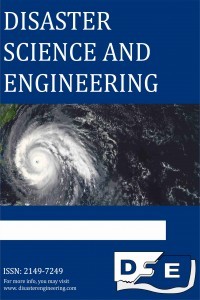Expanding Horizons in Mitigating Earthquake Related Disasters in Urban Areas: Global Development of Real-Time Seismology
Expanding Horizons in Mitigating Earthquake Related Disasters in Urban Areas: Global Development of Real-Time Seismology
Real-time seismology is a newly developing alternative approach in seismology to mitigate earthquake hazard. It exploits up-to-date advances in seismic instrument technology, data acquisition, digital communications and computer systems for quickly transforming data into earthquake information in real-time to reduce earthquake losses and its impact on social and economic life in the earthquake prone densely populated urban and industrial areas. Real-time seismology systems are not only capable of giving rapid earthquake source information such as magnitude and epicenter but also spatial distribution of ground shaking in order to quick emergency response and rapid recovery efforts. Moreover, it provides early warnings before upcoming strong ground shaking in location of interests to reduce damage in critical infrastructure. In addition to faulting mechanism, it also provides finite-fault and rupture process information, such as slip distribution and rupture directivity, for large earthquakes in near-real-time to further assess extent of faulting and damage. The real-time seismology systems would play a key role to increase urban resilience and sustainability post disaster situations. Various advanced systems are currently operating in the earthquake prone countries such as Japan, United States, Taiwan, Mexico, and Turkey and in development stage in many others. The present study summarizes how the real-time seismology has globally developed to what extent it has been capable of earthquake hazard mitigation and why it is important for reducing earthquake disaster.
___
- Kanamori, H., Hauksson, E. ve Heaton, T., “Real-time seismology and earthquake hazard mitigation”, Nature, 390, 461-464., 1997
